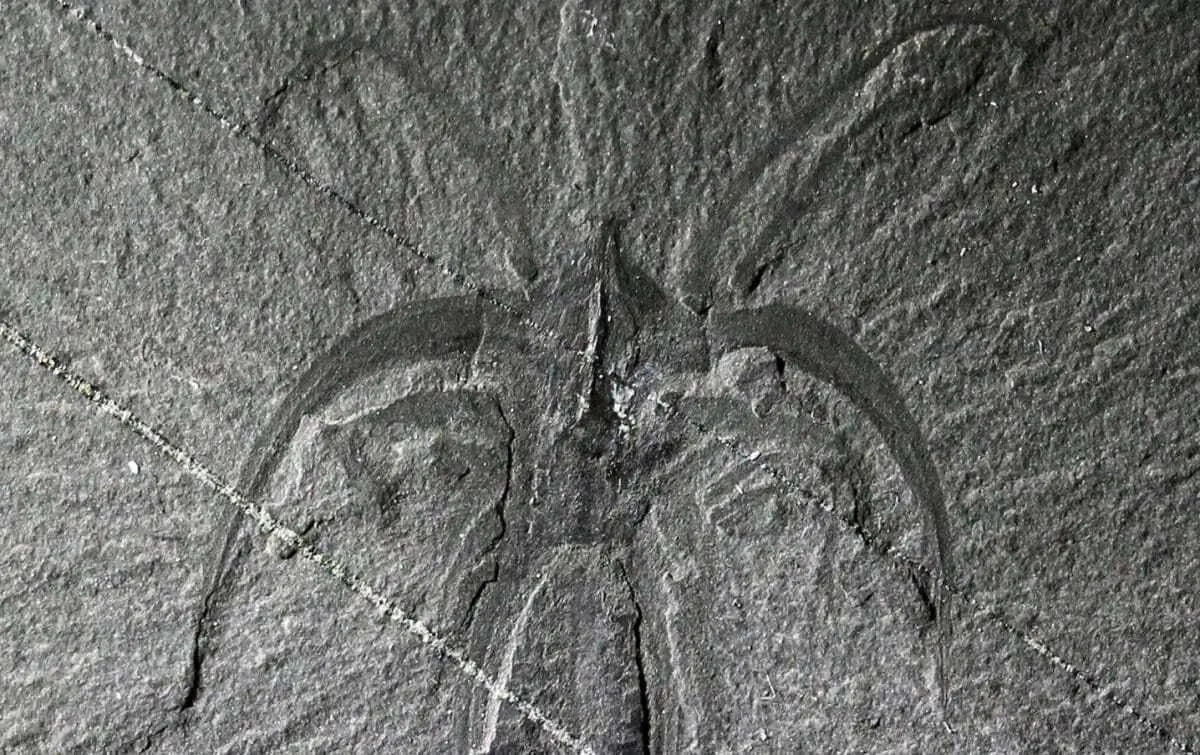Scientists have identified a mineral signature for sites that are more likely to contain rare fossils that preserve evidence of soft tissue — essential information to understanding ancient life.
Much of what we know about the earliest life on Earth comes from the organic remains of organisms without hard parts. Yet the vast majority of fossils rely on hard tissue such as shells, teeth, and bones for their preservation. Soft tissue parts, such as eyes and internal organs, tend to decay before they can fossilize. This also is true for organisms made up entirely of soft tissue, such as worms.
A major exception to this is the Burgess Shale in Canada, a 508 million-year-old deposit that contains a trove of fossils, some with shells but the majority without, from the Cambrian explosion of animal diversity on Earth. The Burgess Shale and similar deposits have provided the basis for a wellspring of scientific research.
In a new study published in the journal Geology, researchers at Yale, Oxford, and Pomona College suggest that the sedimentary rocks that contain these fossils carry a specific signature — which can be used to find other Burgess Shale-type deposits.
“This discovery is important because it will help us to narrow the search for exceptionally preserved fossils in thick sequences of Cambrian and Precambrian rocks, which harbor critical clues to the early evolution of animal life on Earth,” said co-author Derek Briggs, Yale’s G. Evelyn Hutchinson Professor of Geology and Geophysics and curator at the Yale Peabody Museum of Natural History.
The first author of the study is Ross Anderson of Oxford, a former graduate student at Yale. Additional authors are Nicolás Mongiardino-Koch of Yale, Nicholas Tosca of Oxford, and Robert Gaines of Pomona College.
The researchers examined more than 200 Cambrian rock samples using powder X-ray diffraction analysis to determine their mineralogical composition, comparing rocks containing Burgess Shale-type fossils that include preserved soft-tissues with those that only contained their fossilized shells or skeletons.
The findings revealed that Burgess Shale-type deposits are generally found in rocks rich in the mineral berthierine, one of the main clay minerals identified by a previous study as being toxic to decay bacteria. “Berthierine is an interesting mineral because it forms in tropical settings when the sediments contain elevated concentrations of iron,” Anderson said. “This means that Burgess Shale-type fossils are likely confined to rocks that were formed at tropical latitudes and that come from locations or time periods that have enhanced iron.”
The researchers identified a mineral signature that enabled them to predict with 80% accuracy whether a particular Cambrian sedimentary rock is likely to contain Burgess Shale-type fossils.
In addition, the researchers said their findings may have applications beyond our own planet. Mars probes and other space missions looking for evidence of life on other planets could use the mineral blueprint in the search for types of rocks that might be more conducive to preserving delicate, decay-prone fossils.
Header Image: Marrella, the most common fossil from the Cambrian Burgess Shale in British Columbia (508 million years old) is a small arthropod less than 2 cm long. Credit : Susan Butts







